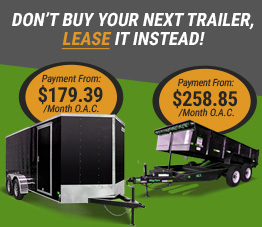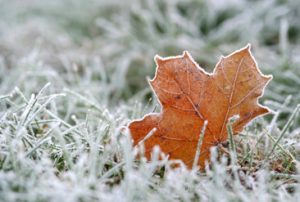 The winter is when you spend the least amount of time thinking of your lawn. Unless you live in an area that is relatively warm all year long, chances are you have put the lawn mower away and are ready for a few months of relaxation before you have to start the lawn maintenance routine again.
The winter is when you spend the least amount of time thinking of your lawn. Unless you live in an area that is relatively warm all year long, chances are you have put the lawn mower away and are ready for a few months of relaxation before you have to start the lawn maintenance routine again.
There are a few things you can do during even the harshest winter that can ensure a beautiful, lush yard once spring rolls around again.
Fertilizing in the Winter
Late fall or early winter are the best times to fertilize cool season grasses. Since the majority of the lawns in North America are made from these grasses, like Bermuda and bluegrass, it is a good bet your yard has a typical cool season blend.
Before the first freeze, give your lawn a thorough fertilizing to replace all of the nutrients that can be lost from the soil during the hot summer months. Once the weather turns cold, the fertilizer will remain in the soil and feed your lawn’s roots all winter long.
When spring comes your lawn will be full of healthy, lush, green grass that has been feeding on good fertilizer nutrients underneath the snow.
Mowing Strategies
During the last month of the summer you should gradually lower the cutting base of your lawn mower each time you mow the lawn. Slowly cutting your grass shorter will allow it to winter well without shocking it by cutting it all off at once.
If you leave your lawn too tall during the winter months it will be prey to field mice and other burrowing animals that want a warm place to sleep. Mice can destroy large parts of your lawn by building nests. They create dead spots where they spend all of their time as well as pulling up large amounts of grass to build their structures.
Make sure your grass is as short as possible at the end of the season. Short grass also protects any new growth that may be more fragile near the end of the growing season.
Keep it Clean
It is easy for items to be left on the lawn during the long, cold winter when no one goes outside very often. Stray logs, toys, and even lawn furniture can be accidentally overlooked before the first snow comes.
Make sure that you clear the lawn of all objects after you mow it for the last time of the year. Do an occasional sweep of the lawn every couple of weeks during the winter, as well.
If an object is left on the grass during cold weather and snowfall it can create large dead spots because of the weight of the object. In the spring the grass in that area will be stunted and thinner than the rest of the yard.
Avoid Excessive Lawn Traffic
When the grass is brown and short it can be easy for people to forget that it shouldn’t be walked on. Try to prevent very much foot traffic on your winter lawn. Grass is relatively resilient, but it will have a difficult time recovering if a path becomes well worn across the lawn.
- Keep your sidewalks cleared of ice and snow so that you and your guests won’t be tempted to cut across the yard very often.
- Never allow anyone to park a truck or a car on your lawn. Even the smallest vehicle will leave impressions in the soil and kill off the grass that is underneath the tires. Using the lawn as a parking lot is the fastest way to kill the good grass and make room for crabgrass and other types of weeds.
Prepare in the Fall
There really is not much lawn care that needs to be done during the cold months of winter. If you properly prepare the lawn during the fall, it will be fine until the warm days of spring arrive once more.
- Make sure you aerate, fertilize, and mow the lawn before the first freeze of the season.
- Rake away any dead leaves that may have fallen and collected on your yard to avoid wet spots that can become mossy or moldy.
- Keep the lawn cleared of debris and help everyone in the family respect the yard while it is dormant.
Once you have taken care of everything that needs to be done during the fall you will be ready to enjoy a nice cozy winter indoors with your family before lawn care season begins again in the spring.
 This chapter tells you what you need to know to tow a trailer behind a car, van or small truck in Ontario. This includes licence and registration requirements, trailer size and characteristics, as well as safety tips to follow when towing a trailer.
This chapter tells you what you need to know to tow a trailer behind a car, van or small truck in Ontario. This includes licence and registration requirements, trailer size and characteristics, as well as safety tips to follow when towing a trailer. 1024 Kingsway Blvd, Sudbury, ON, P3B 2E5
1024 Kingsway Blvd, Sudbury, ON, P3B 2E5 




 VIEW OUR GREAT DEALS
VIEW OUR GREAT DEALS Have you winterized your outdoor power equipment? Taking a few simple steps before storing your gas-powered tools for the winter will ensure a hassle-free start next spring. It will also extend the life of your small gasoline engines.
Have you winterized your outdoor power equipment? Taking a few simple steps before storing your gas-powered tools for the winter will ensure a hassle-free start next spring. It will also extend the life of your small gasoline engines.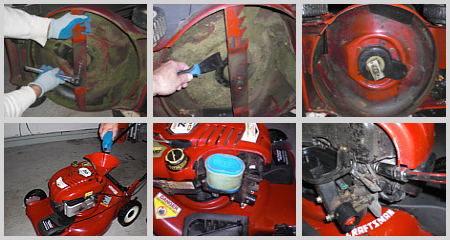
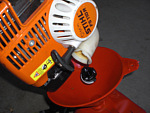
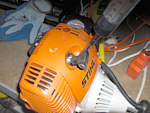
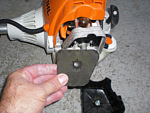
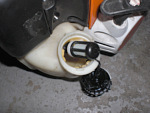
 The winter is when you spend the least amount of time thinking of your lawn. Unless you live in an area that is relatively warm all year long, chances are you have put the lawn mower away and are ready for a few months of relaxation before you have to start the lawn maintenance routine again.
The winter is when you spend the least amount of time thinking of your lawn. Unless you live in an area that is relatively warm all year long, chances are you have put the lawn mower away and are ready for a few months of relaxation before you have to start the lawn maintenance routine again.